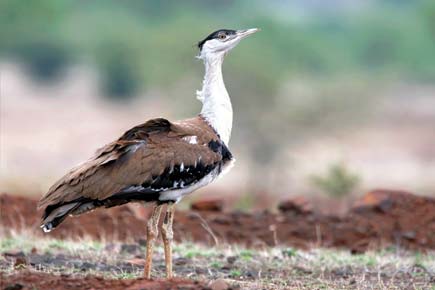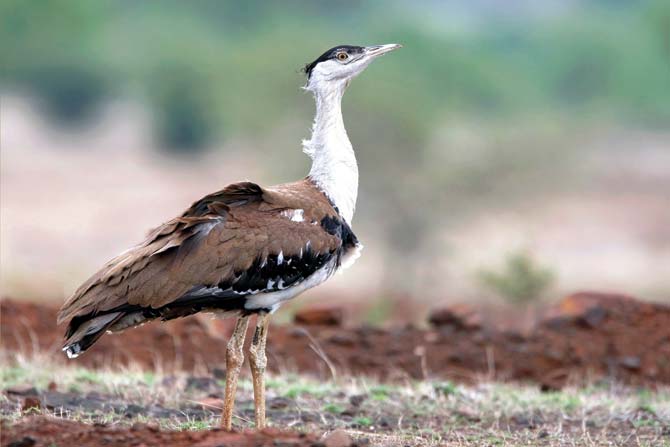To halt the declining numbers of the Great Indian Bustard, environmentalists want forest department to declare 10-km area around bird sanctuary in Solapur as pesticide free

The damaging effects of pesticides on our health and ecological system are widely known. The pervasive use of pesticides is linked to a marked decline in the population of the critically endangered bird — Great Indian Bustard. Concerned with the continuous decline in the number of the bird, environmentalists want the authorities to declare ‘No Pesticide’ zone around the Great Indian Bustard Sanctuary in Nannaj, Solapur.
ADVERTISEMENT
Also read: In search of the great Indian bustard

The number of the Great Indian Bustard in India is now less than 300. Pic/Pune Forest Department (Wildlife)
The environmentalists will also be sending a letter to the Pune forest department (Wildlife) citing their apprehensions.
The eco-activists suggested the area within the 10-km radius, surrounding the sanctuary, should be demarcated as a no-pesticide zone. They also want farmers to do organic farming around the region.
Recently, the Union Ministry of Environment and Forests (MoEF) had given its go-ahead for the rationalisation of the boundary of the sanctuary. Now, the Nannaj bird sanctuary has been reduced from its original 8,496 sq km to just 1,100 sq km. The government had faced flak from nature lovers over this move. Now, the experts point out that as the forest department has substantially shrunk the area, they should focus on proper monitoring and grazing of the grassland.
The reason for reducing the size of the sanctuary was the protests by the farmers. The local farmers were against the sanctuary as it was occupying a lot of farming land.
Official speak
S Limaye, chief conservator of forest, Pune Wildlife, said, “The decision taken by the Ministry of Environment and Forests ( MoEF) will help in conservation of the GIB and we are confident that communities staying around the sanctuary will help us in protecting the birds. We would also be interacting with the local farmers and educate them about benefits of organic pesticides and harms of chemical pesticides.”
 Subscribe today by clicking the link and stay updated with the latest news!" Click here!
Subscribe today by clicking the link and stay updated with the latest news!" Click here!






